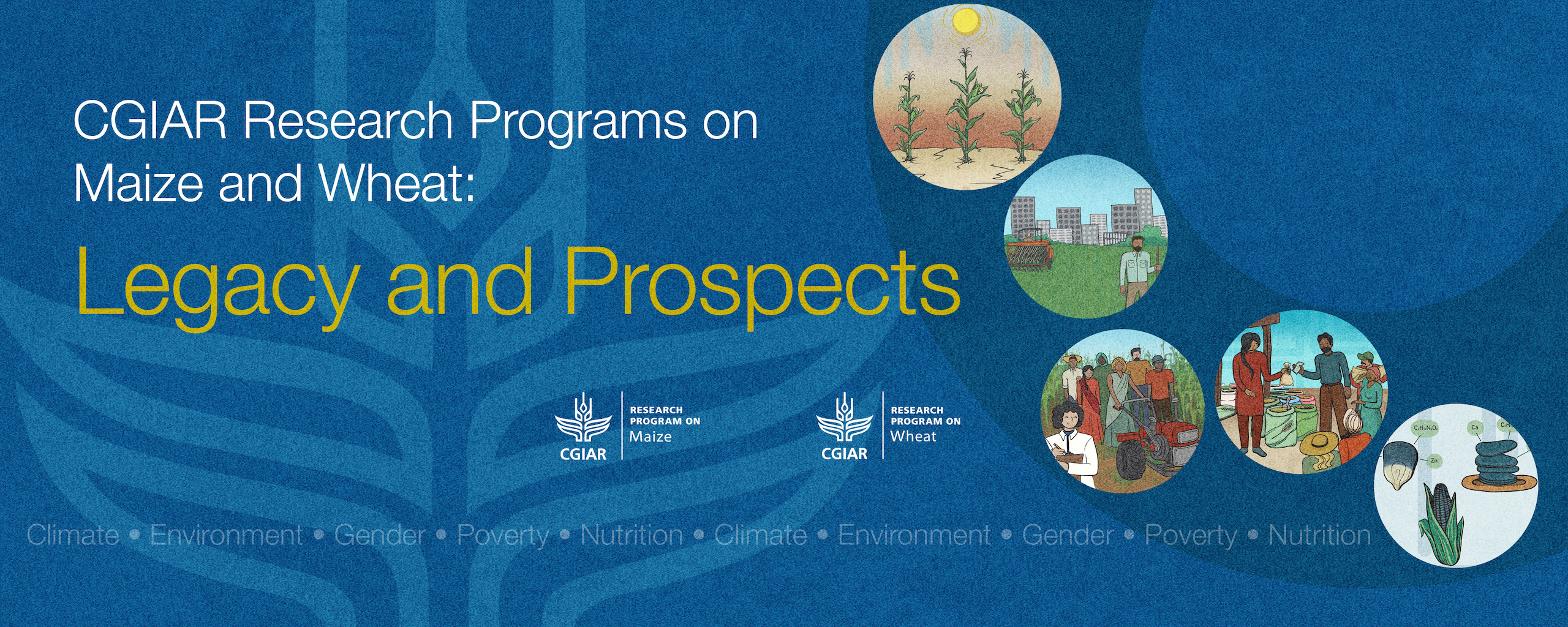Asia
As a fast growing region with increasing challenges for smallholder farmers, Asia is a key target region for CIMMYT. CIMMYT’s work stretches from Central Asia to southern China and incorporates system-wide approaches to improve wheat and maize productivity and deliver quality seed to areas with high rates of child malnutrition. Activities involve national and regional local organizations to facilitate greater adoption of new technologies by farmers and benefit from close partnerships with farmer associations and agricultural extension agents.
Wheat titan honored posthumously by India
 Climate adaptation and mitigation
Climate adaptation and mitigation
Sanjaya Rajaram, former CIMMYT Wheat Program Director, has been recognized with the Padma Bhushan Award for his contributions to wheat improvement worldwide.
New publications: Genome-wide breeding to curtail wheat blast
 Environmental health and biodiversity
Environmental health and biodiversity
Researchers evaluate the use of genomic selection in wheat breeding against deadly fungal disease.
How interactions among hidden enemies and drought effects grain yield and disease severity in bread wheat
 Environmental health and biodiversity
Environmental health and biodiversity
CIMMYT scientists in Turkey investigated the effect of soil borne diseases individually and in combination with drought on morphological and physiological traits in wheat germplasm.
Meet The Indian Researcher Helping To Solve The Deadly Aflatoxin Puzzle
 Nutrition, health and food security
Nutrition, health and food security
Source: Forbes (29 Dec 2022)
Pooja Bhatnagar-Mathur, a Principal Scientist at CIMMYT, says aflatoxin, a toxin produced from soil fungus and found in groundnuts like peanuts, is a serious public health and food safety problem around the globe.
High-yielding staple crops improve health and prosperity in developing countries
 Nutrition, health and food security
Nutrition, health and food security
New research uncovers long-term impacts of Green Revolution era productivity, points out lessons for today.
State-of-the-art maize doubled haploid facility inaugurated in India
 Innovations
Innovations
The facility will offer maize doubled haploid production services to public and private sector partners in South Asia.
CIMMYT trains next generation of scientists to tackle soil-borne pathogens
 Capacity development
Capacity development
Two new graduates join pool of research leaders focused on finding new sources of resistance against these pathogens.
A decade of world-leading maize and wheat research
 Capacity development
Capacity development
Legacy websites and photo exhibition mark the closing of the CGIAR Research Programs on Maize and Wheat, and their impact on sustainable agricultural development.
Bringing wild wheat’s untapped diversity into elite lines
 Environmental health and biodiversity
Environmental health and biodiversity
Researchers hypothesized that many wild wheat accessions in genebanks feature useful traits that can help diversify breeding programs.
Workshop held at BARI
 Capacity development
Capacity development
Source: New Age (21 Nov 2021)
CIMMYT-Bangladesh country representative Timothy J. Krupnik was the guest of honor at a workshop organized by Bangladesh Agricultural Research Institute on fall armyworm management.
Pakistan, India transboundary dialogue imperative to resolve Lahore’s pollution: Amin
 Climate adaptation and mitigation
Climate adaptation and mitigation
Source: Daily Times (21 Nov 2021)
At COP26, Special Assistant to Pakistan’s Prime Minister on Climate Change said that a transboundary dialogue on mitigating air pollution was imperative to resolve Lahore’s smog.
Ending rice-wheat monopoly can ease Delhi woes
 Climate adaptation and mitigation
Climate adaptation and mitigation
Source: The Times of India (13 Nov 2021)
ML Jat speaks with The Times of India about the work of CIMMYT and its partners on diversification and carbon credits—two futuristic ways to reduce greenhouse gas emissions from agriculture in India.
Less water for better crops
 Innovations
Innovations
Researchers explore how coupling automation with drip irrigation can enhance water use efficiency and productivity, especially in South Asia’s cereal-based systems.














